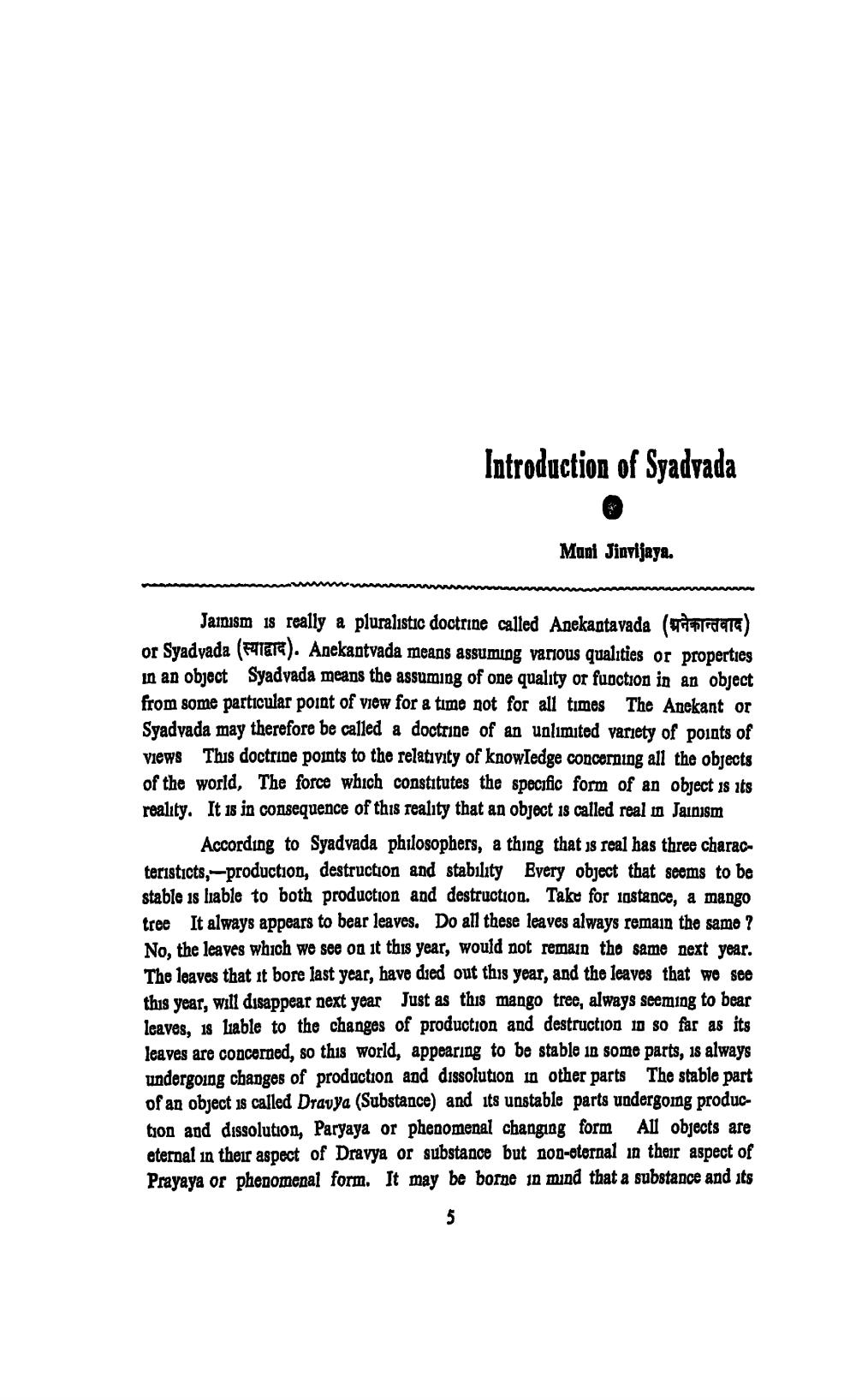________________
Introduction of Syadvada
Mani Jinvijaya.
Jainism is really a pluralistic doctrine called Anekantavada (garuara) or Syadyada (F41ETC). Anekantvada means assuming various qualities or properties in an object Syadvada means the assuming of one quality or function in an object from some particular point of view for a time not for all times The Anekant or Syadyada may therefore be called a doctrine of an unlimited variety of points of views This doctrine points to the relativity of knowledge concerning all the objects of the world. The force which constitutes the specific form of an object is its reality. It 18 in consequence of this reality that an object 18 called real o Jainism
According to Syadvada philosophers, a thing that is real has three characteristicts,-production, destruction and stability Every object that seems to be stable is liable to both production and destruction. Take for instance, a mango tree It always appears to bear leaves. Do all these leaves always remain the same ? No, the leaves which we see on it this year, would not remain the same next year. The leaves that it bore last year, have died out this year, and the leaves that we see this year, will disappear next year Just as this mango tree, always seeming to bear leaves, 18 liable to the changes of production and destruction 10 so far as its leaves are concerned, so this world, appearing to be stable in some parts, 18 always undergoing changes of production and dissolution in other parts The stable part of an object is called Dravya (Substance) and its unstable parts undergoing production and dissolution, Paryaya or phenomenal changing form All objects are eternal in their aspect of Dravya or substance but non-eternal in their aspect of Prayaya or phenomenal form. It may be borne in mind that a substance and its




